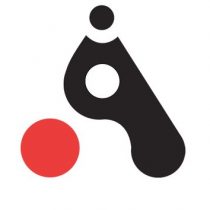The global technology landscape had undergone rapid changes in the last few years, triggered by the pandemic. The evolving scenario prompted business enterprises to streamline and transform their processes by adopting the latest test automation tools and following the best practices. And to achieve positive business outcomes and deliver higher levels of agility, business enterprises need to focus on the quality of software. This is not only to achieve market differentiation but to deliver customer delight as well.
With competitiveness being the buzzword, business enterprises have no option but to improve their software quality assurance techniques and practices. They need to do so by identifying, prioritizing, and implementing a host of factors (internal and external). However, businesses often find themselves challenged when it comes to adopting trending processes and practices for software quality assurance. To provide such enterprises with deep insights into the ever-changing world of QA, Katalon’s State of Quality Report comes as a guide. The annual report provides a comprehensive analysis of the trends and challenges that drive/beset the world of QA. The report offers guidance to businesses on implementing test automation, QA techniques, and enhancing AI-enabled capabilities. Let us get an overview of the key findings of the report.
What Are the Key Findings of Katalon’s State of Quality Report 2023?
Quality assurance has become the lynchpin for business enterprises to improve the overall quality of software products and services. By doing so, they help reduce development costs, time, and effort, minimize rework, and improve the reliability and usability of the software. The key findings of Katalon’s State of Quality Report 2023 can serve as a comprehensive guide for businesses to meet their quality goals.
#1. Striking a balance among speed, cost, and quality: In the fast-paced world of software development, QA teams find it difficult to balance speed, quality, and cost, as reported by 40% of respondents. The focus on these parameters is necessary to keep up with the demands of continuous delivery and rapid software release cycles. Therefore, any automation testing company must have comprehensive and unified QA processes, techniques, and practices to manage software quality..
#2. Adopting test automation and code review: QA teams are wont to using a combination of manual testing, test automation, and code review to achieve their quality objectives. However, certain QA techniques are often used in conjunction with each other. For instance, automated unit testing combined with integration/system testing and code review, as well as test-driven development paired with behavior-driven development.
#3. The effectiveness of test automation and code review: According to the survey, two-thirds of respondents considered test automation, including automated integration, system, and unit testing, as the most effective technique, followed by code review. The most effective QA techniques and tools are also the most widely used ones. For example, test automation happens to be a valuable tool for identifying bugs and validating the quality of software releases, thereby accelerating the time-to-market. On the other hand, code review helps reduce errors that may arise during the testing process.
#4. Improvement in quality upon delivery: Automated testing services prioritize enhancing the quality of software before delivery. This was evident in the number of respondents (73%) vouching for it, with only a small portion (6%) not in agreement. Interestingly, the survey revealed that most QA team members were not happy with the QA practices being followed in their teams. Around 63% of respondents felt their satisfaction levels were either lower or average. These findings suggest a need for test automation services to follow and use better QA practices and tools.
#5. Prioritizing Agile: The survey pointed out the higher use of Agile methods over the waterfall approach. Among the respondents, those working with Agile teams were found to be more satisfied with the quality of their software than those following Waterfall or other methods. About 41% of Agile respondents rated their satisfaction level to be as high or very high, while only 30% of Waterfall practitioners did the same.
#6. Test automation used for other tests: According to the survey results, test automation continues to remain popular among the QA community, especially for regression testing (72%), functional testing (58%), and integration testing (58%). Also, automation is widely used for other types of testing, such as API, unit, performance, usability, and security. The majority of respondents reported leveraging automation for generating test cases, test scripts, and test data, evaluating test results, and integrating them with CI/CD/DevOps.
#7. Test automation generates high ROI early on: The survey found test automation to be the most popular and effective QA approach, offering high ROI early on. About 63% of respondents experienced an ROI increase of 20% or more, while 79% achieved a positive ROI within the first year of adoption. Thus, notwithstanding the upfront investments in implementing automation by software test automation services, the study suggested the initial investment paid off rather quickly.
#8. The higher payoff with test automation: By implementing test automation, QA automation services can experience a favorable return on investment (ROI) within the first year. However, according to this study, the proportion of respondents who attained an ROI of 20% or greater rose from 58% to 87%. This happened when they implemented test automation within a year or after five years, respectively. Impressively, among those who adopted automation for five or more years, 20% of them saw a minimum ROI of 50%, with only 3% of them indicating a loss.
#9. Fewer adoption of AI-enabled test automation: As per the findings, the utilization of AI in test automation is still in its initial phase. For instance, only 40% of respondents employed AI-powered or intelligent features in their automation tools. These AI-driven capabilities are employed for diverse testing operations, with the most prevalent ones being the creation of test cases, scripts, and data.
#10. AI to drive test automation in the future: The results of this survey proved the necessity for automation testing services to incorporate AI-powered functionalities to enhance the intelligence and autonomy of test automation. The services seek a greater implementation of autonomous test cases, scripts, and data generation. Additionally, AI solutions have the potential for bug detection and fixing, optimization of test suites, maintenance and restoration of tests, evaluation and reporting of test results, and visual testing.
Conclusion
Katalon’s State of Quality Report 2023 has acknowledged the entrenched practice of test automation among QA teams. It alluded to the gradual shift from using automated testing tools to AI-enabled autonomous testing frameworks. The future is likely to see a new era in software testing through intelligent automation, where AI-augmented test automation platforms and tools will be in greater use.
In today’s fast-paced and competitive software development industry, staying ahead of the latest trends is crucial to business success. That’s why the webinar “Software Quality Insights: A Deep Dive into Katalon’s State of Quality Report 2023” is a must-watch for QA teams and businesses.
During the webinar, industry experts from Katalon, Deloitte, and Cigniti have gone beyond the statistics and insights of the report to share their real-world experiences in enhancing and meeting their software quality goals. Attendees have learned about best practices and actionable strategies that QA teams and businesses can implement to achieve higher levels of software quality and drive tremendous business success.
You can watch the session by clicking here.

































